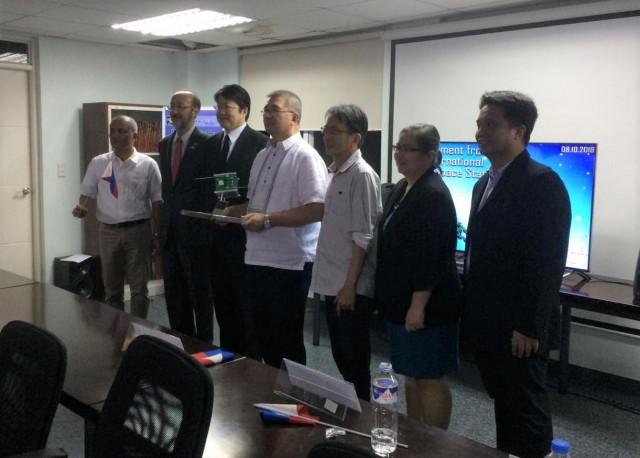Pinoy-made cube satellite Maya-1 officially released into orbit
The maya has finally left its nest.
A little over a month after reaching the International Space Station (ISS), the Filipino-made cube satellite Maya-1 was deployed into orbit on August 10 at 5:45 pm. Two other CubeSats — Bhutan’s BHUTAN-1 and Malaysia’s UiTMSAT-1 — were also deployed into orbit.
The BIRDS have taken flight
The three CubeSats were produced as part of the BIRDS-2 Project, a multinational interdisciplinary satellite project of the Kyushu Institute of Technology in Japan. Built by Filipino space engineers Joven Javier and Adrian Salces, Maya-1 is equipped with cameras, a transmitter, and data collection capabilities.
Maya-1 and its siblings were deployed via the Japanese Experimental Module Small Satellite Orbital Deployer (J-SSOD), a mechanism specifically designed for small satellites. J-SSOD was used to transfer the satellites from the Japanese experiment module Kibo. Kibo also served as the deployment module for Diwata-1, the first non-commercial Filipino-made microsatellite, in 2016.

A local viewing session for the launch was held at the Electrical and Electronics Engineering Institute Reading Room in UP Diliman. The event was streamed live via the online channel of the Japan Aerospace Exploration Agency (JAXA), all the way from JAXA’s Tsukuba Space Center.
“The Department of Science and Technology will continue to support this program, and of course other high-quality research [projects] that we need to undertake so that we can move forward,” assured DOST Secretary Fortunato dela Pena in his opening message.
“We hope that this kind of cooperation will continue between our countries,” said Minister Atsushi Kuwabara of the Embassy of Japan, who was also a guest at the event.
Mr. Shigeki Kamigaichi, a Senior Expert at JAXA, also shared a brief presentation on Small Satellite Deployment via J-SSOD, as well as the history of the BIRDS program.
A year-long journey, one long mission
For about a year, the CubeSats will travel along the ISS orbit, at an altitude of approximately 400 kilometers. During its stay in orbit, Maya-1 will perform its functions as it passes over or near the Philippines three or four times per day, collecting data that will be transmitted to an international ground station network.
The data that will be obtained by Maya-1 will prove useful in a number of practical applications, such as an advanced warning system for flash-floods and landslides, monitoring health conditions of communities in remote areas, monitoring fishing vessels in Philippine territories, and keeping track of endangered species.
“Our team will be working feverishly to really try to maximize the learning that we will get by having [Maya-1] in space,” affirmed Dr. Joel Joseph Marciano Jr., Program Leader of the Philippine Scientific Earth Observation Microsatellite Program (PHL-Microsat) and the Director of DOST’s Advanced Science and Technology Institute.
Maya-1’s deployment into orbit is the latest milestone in a series of initiatives to bolster the Philippines’ space science development. These include the upcoming launch of the Diwata-2 microsatellite, the “Space Science and Tech Proliferation through Partnerships” program (a graduate program offered by PHL-Microsat via the UP EEE Institute), and the establishment of the Philippines’ own national space agency.
In the words of Sec. dela Pena: “Simply put, we do not want to be left out.” — LA, GMA News



